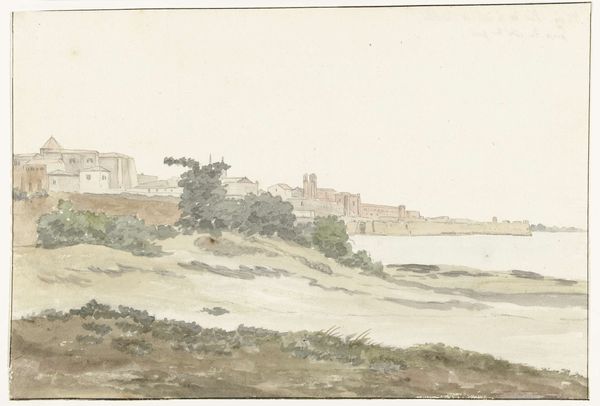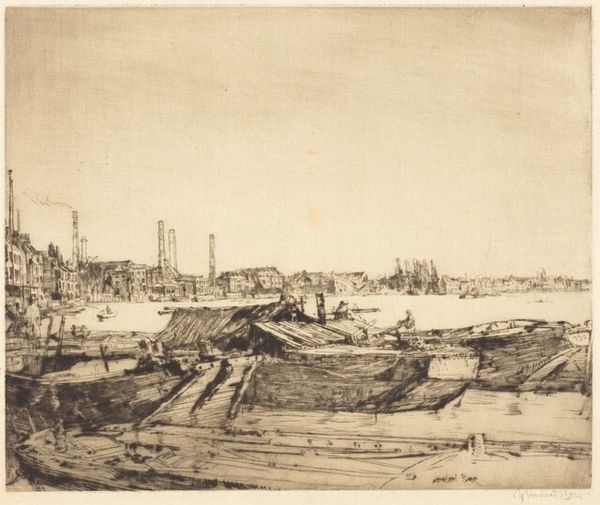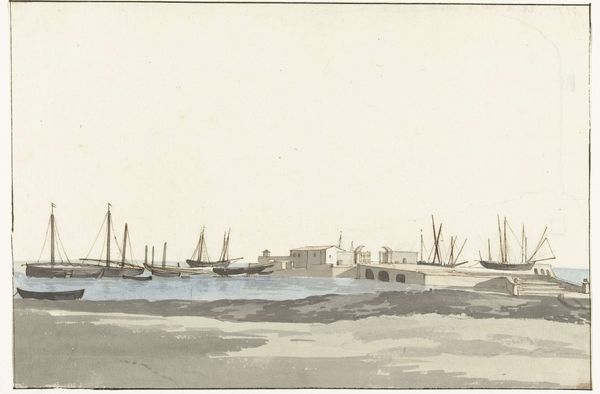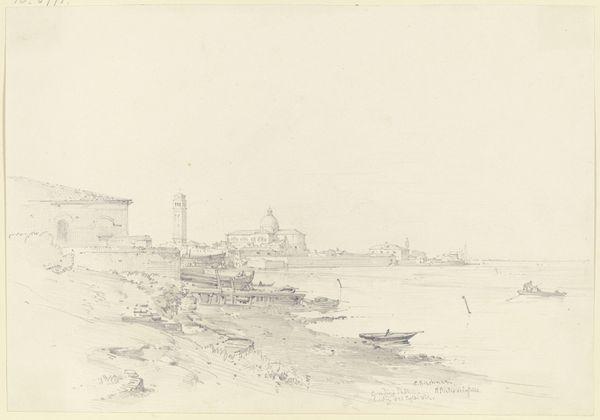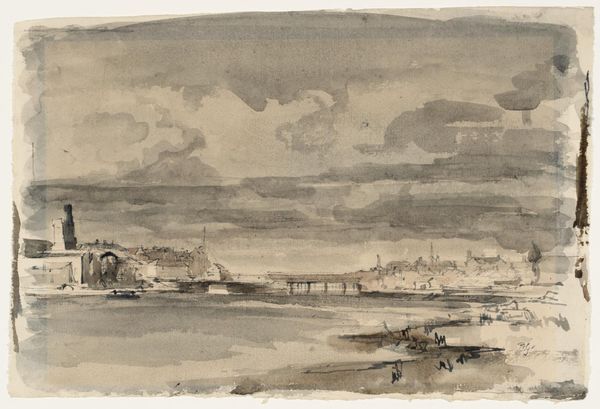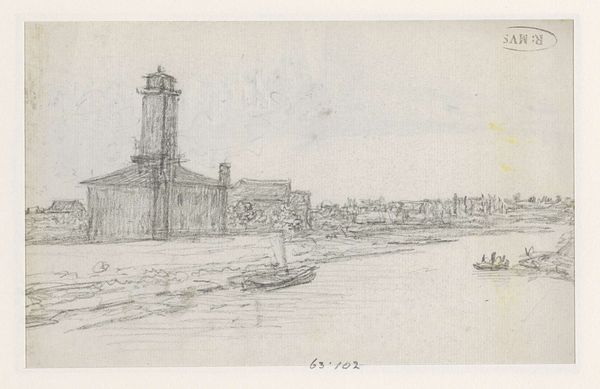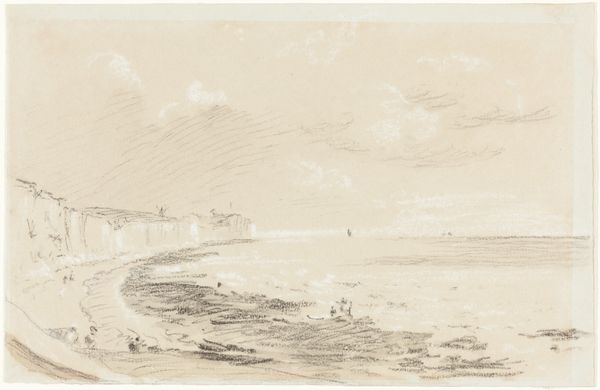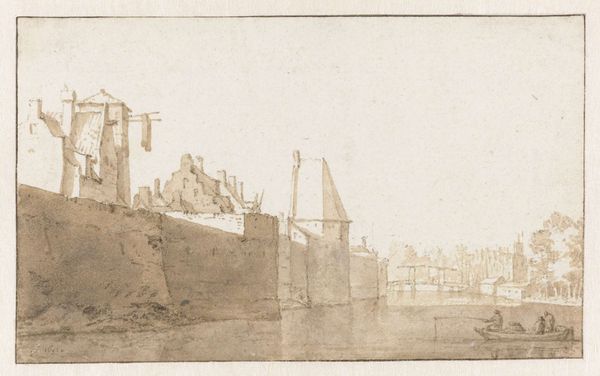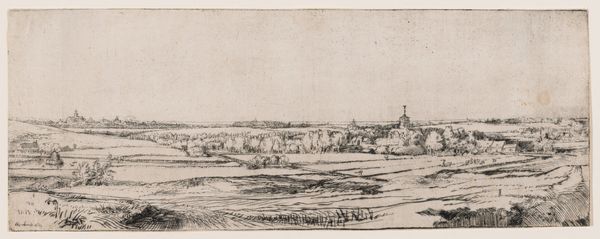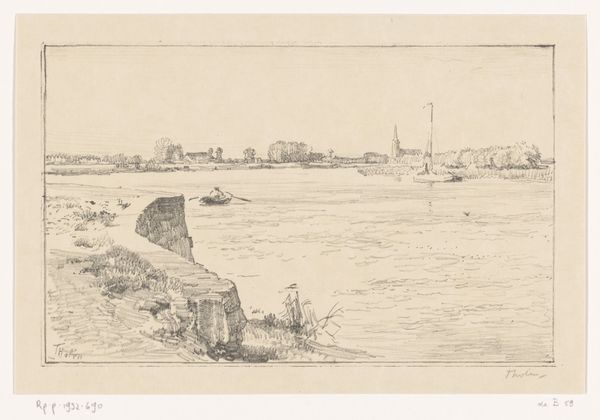
drawing, pencil
#
drawing
#
neoclacissism
#
pencil sketch
#
landscape
#
etching
#
pencil
#
cityscape
Dimensions: height 160 mm, width mm
Copyright: Rijks Museum: Open Domain
Curator: This delicate pencil drawing captures Trani, a coastal city, as seen through the eyes of Louis Ducros in 1778. The work is currently held in the Rijksmuseum collection. What are your initial thoughts? Editor: My first impression is of its quiet stillness. The subdued palette and the subtle gradations of tone create a very serene, almost melancholic mood. The composition, too, with that broad expanse of sky, reinforces this sense of space and contemplation. Curator: Interesting. Ducros was known for his detailed landscapes and cityscapes, often commissioned by wealthy Europeans undertaking the Grand Tour. The etching-like precision hints at his attention to representing architectural details faithfully. One must consider who would want a drawing such as this. What kind of workshop practice was in place? Was it sold directly to wealthy patrons? Editor: The restrained palette, dominated by grey and brown hues, gives it a remarkable tonal unity. Notice the contrast, not in color, but in texture and tone, between the rough foreground and the smooth planes of the buildings in the distance. And how those architectural forms, while precisely rendered, are softened by the hazy atmosphere. It’s almost like he’s abstracting the city into geometric shapes. Curator: Yes, the interplay between artistic expression and documentation is key. These images would function almost as a kind of social currency. And how does the emerging neoclassical art movement inform our reading of the artwork, or vice versa? Editor: Indeed. I am also quite intrigued by that lone figure on the shore. Ducros' strategic use of human scale emphasizes the grandeur and stability of architectural design in relation to the landscape, capturing its sublime permanence, against nature's sublimity and strength. Curator: Well, considering the conditions of producing works for consumption back in 1778 gives this drawing additional value, and helps us consider its artistic qualities through the scope of its function, value and place in society. Editor: A fitting synthesis; viewing Ducros’ delicate landscape as both historical artifact and formal arrangement offers profound insights into its aesthetic strength.
Comments
No comments
Be the first to comment and join the conversation on the ultimate creative platform.
